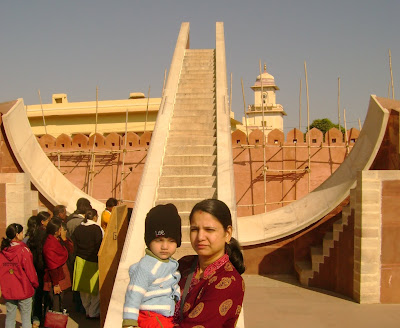

Our next stop was Jaigarh fort, which means the Fort of Victory, and is located 12 kilometres away from Jaipur. This colossal fort is the best of the three forts overlooking the city (the other two being the Amber and the Nahargarh forts) It is built atop a hill by Maharaja Jai Singh in 1726 A.D. While the Amber fort is situated at the bottom of the hill. Both the forts are well connected through guarded passages.
Nestled amidst rock-strewn, thorny scrub-covered hills, this rugged fort, was a center of artillery production for the Rajputs. The highlight of the fort is the Jaivana, which is the world’s largest cannon on wheels! There is a vast collection of cannons in this fort. This fort also served as the royal treasury for a number of years. A huge moat surrounds the fort, too !

A striking museum is present in its premises,with an extraordinary collection of armoury used during the bygone era including swords, shield, guns, cannon balls etc.
Another interesting feature is, the water channels built inside the fort – part of rainwater harvesting system ! There are a total of 3 underground tanks in the fort and the largest of them had the capacity to store 60,00,000 gallons of water. A 5 kilometre long canal can be seen entering the fort complex to bring in water from the high hills and store in the fort . A huge water tank is centrally located connecting the canal.
Truly, a planning and engineering feat !
D4GQ4CSKNGBK

















